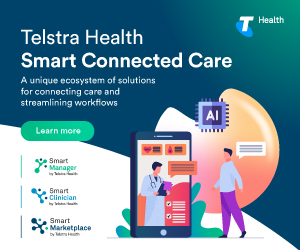3 Ways to give your patient data a health check
Increased volumes in patient data, stricter data security laws and patient data concerns are putting healthcare organisations under pressure to find more effective solutions to managing and storing sensitive patient data.
In this article, we take a look at three ways to give your patient data a ‘health check’ to ensure it remains protected and compliant-ready.
1. Maintain data integrity at scale
According to MedicalDirector’s latest Patient Engagement Survey 2018, conducted in partnership with online appointment and eHealth platform, HotDoc, patients value both privacy and security as a top priority in healthcare.
In fact, when it comes to accessing medical health records, over 90% of respondents agreed both security (availability, accuracy, safety and integrity of data) and privacy (confidentiality and appropriate use of data) are extremely important.
This means it’s important to implement the best solution to maintain the integrity of your patient data. A great example of being proactive is using cloud-based solutions with robust secure storage and backup systems.
And more than ever before, healthcare organisations are taking advantage of the new, compliance-ready, secure cloud environments to extend and distribute their healthcare ecosystem.Cloud-based clinical and practice solutions such as Helix, can ensure the safety and integrity of your data, even when your practice scales and your patient data grows.
2. Update your health software
Software updates are usually small, incremental improvements to improve the operation of your software, smooth out any minor bugs and add support for new models of technical equipment. These updates commonly reach you as a free download for an application, operating system, or software suite.
A common software update is a security update, which is issued to protect your sensitive patient data and ensure all health records remain in a safe environment.
Even though regular updates are typically small and free, and seem, at first glance, like a ‘nice to have’ rather than an essential requirement, health technology software updates play a critical important role in protecting patient data privacy and security. This is because older versions of software may not provide the same level of security as updated versions, potentially leaving your practice data at risk.
So in order to ensure your patient data is protected and your system works smoothly, ensure you install all your updates as soon as they are released.
2. Be proactive, not reactive
There’s not place for complacency when it comes to patient data management, so take measures to be proactive, rather than reactive to ensuring your patient data is not put at risk.
Proactive data measures include:
- Regularly monitoring and managing data access: New tools around application firewalls and application-centric security allow greater control over data security. At the same time, new security tools can allow you to monitor who is actually accessing the data, what kind of data is being accessed and from where.
- Periodically checking your security framework tools and policies: Plan to regularly test out your own systems and ensure your security architecture is evolving at the same pace as digital healthcare demands.
- Leveraging security virtualisation to combat data loss: Healthcare providers now have more options when it comes to adopting virtual appliances capable cutting edge security capabilities including firewall and advanced security services, data loss prevention and IPS/IDS.
It’s also important to take measures to ensure your practice meets changing patient privacy laws, My Health Record requirements, and the NDB Scheme. The new NDB scheme, requires entities with obligations to secure personal information under the Privacy Act 1988 to notify individuals when their personal information is involved in a data breach that is likely to result in serious harm. The OAIC’s patient privacy factsheets outline a number of key points you need to know about patient rights to their health information.









